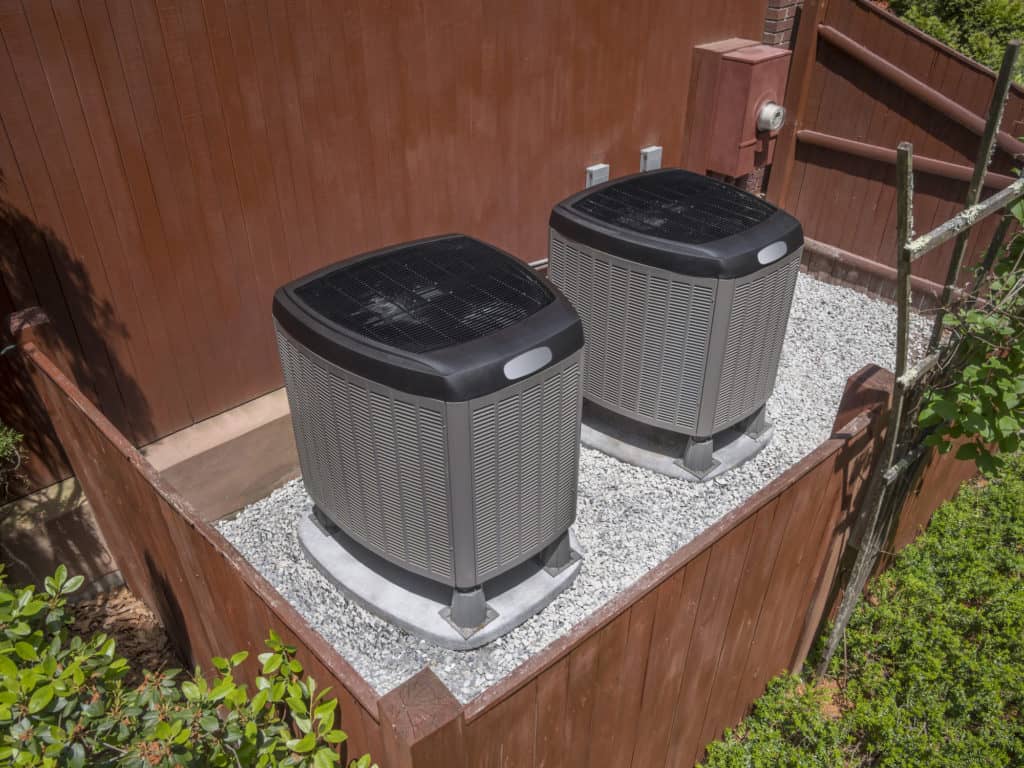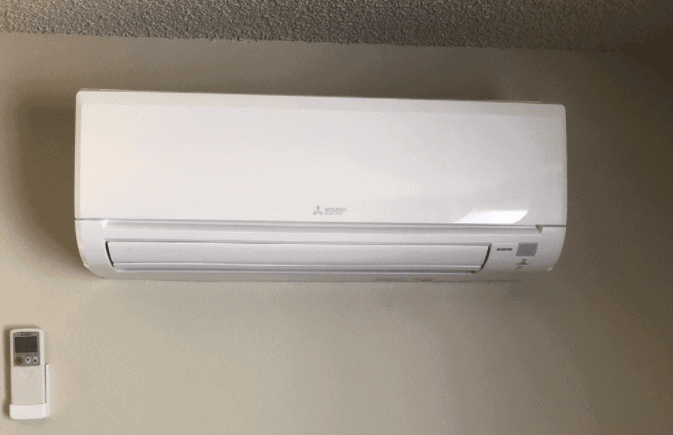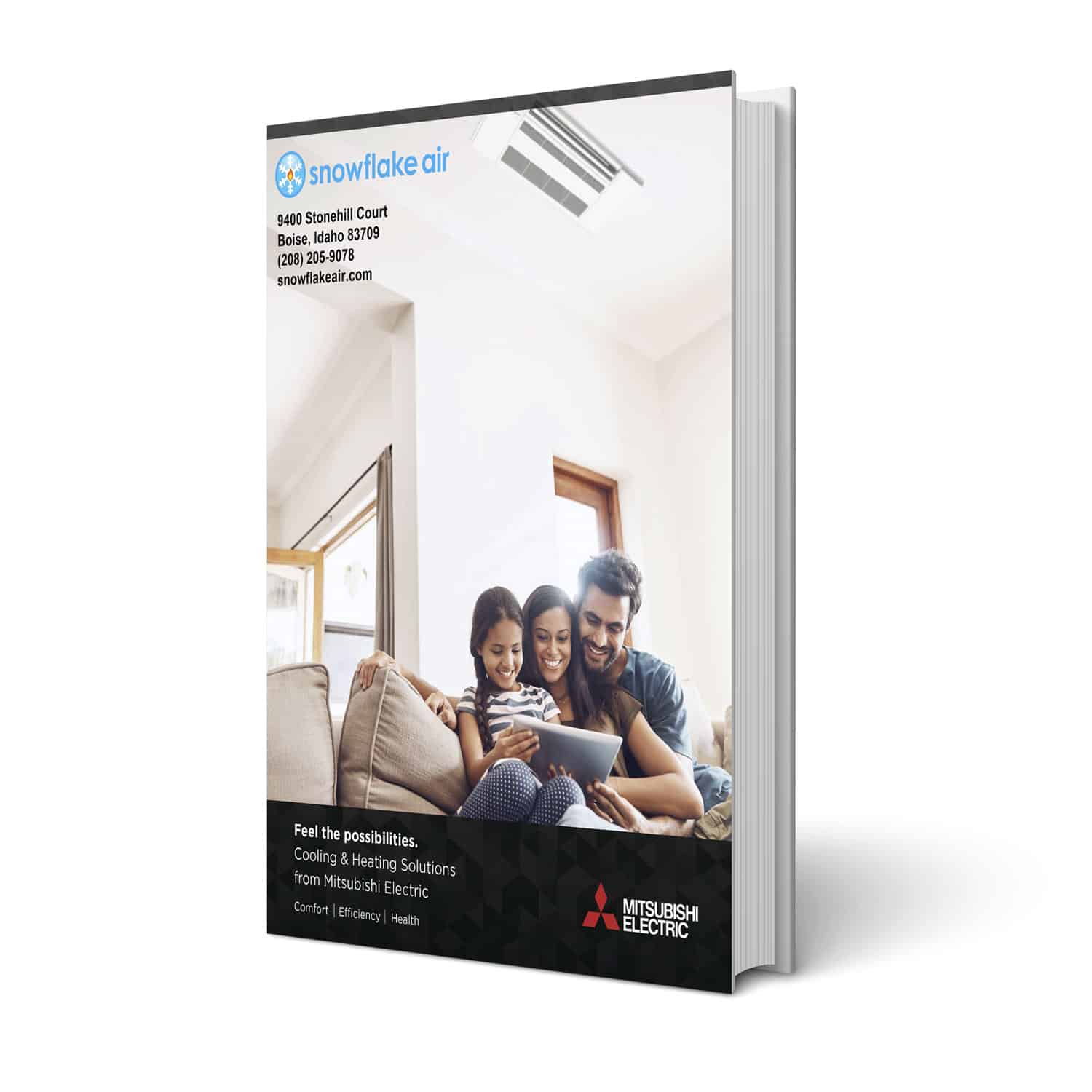![How Much Does An Air Conditioning Unit Cost In Boise, ID? [2021]](https://snowflakeair.com/wp-content/uploads/2021/01/ai_gasconversion.jpg) The average cost to replace heating and air conditioning in Boise, ID is $7,200. Typical range is $5,500 to $10,000. The highest is around $14,000. Your price depends on:
The average cost to replace heating and air conditioning in Boise, ID is $7,200. Typical range is $5,500 to $10,000. The highest is around $14,000. Your price depends on:
- BTU and tonnage
- Energy efficiency
- How long you’ll live there
- Ductwork or no ductwork
Many cost factors go into the amount, so we can’t give a solid number without seeing your home. But, you have some options. We’ll walk you through how to zero in on what kinds of models and specs will work in your home – and how much you can expect to spend on them.
In particular, we’ll mention that ductless mini splits are becoming more and more popular as an alternative to air conditioning. With ductless, you get exceptional comfort and lower bills. Plus, the same system can heat your home all winter.
We’ll talk a little more about ductless further down. We also have more articles on the subject here and here. Or, download a free brochure to learn more.
But, back to air conditioners and their cost: We’ll walk you through what to expect in our climate and with the specific homes you’ll find in Boise, Meridian, Kuna, and other towns. And, we’ll make recommendations for homes without ductwork.
If you have questions or your Treasure Valley home is ready for an air conditioner replacement, click below or call Snowflake Air at (208) 205-9078 for a free consultation.
Load Calculations
If your old air conditioner worked fine, we’ll help you choose a new one with the same load specifications. But, if you’ve had rooms that were always too hot or too cold, we’ll do a load calculation and check for other problems.
Problems With Your Old Air Conditioner
We run into some common problems with older air conditioners.
Wrong-Sized Equipment
An Ac too strong or too weak for the house gives you hot spots and too much humidity. Undersized systems aren’t strong enough. Oversized systems won’t stay on long enough to cool or dehumidify properly.
Leaks In The Ductwork
Ductwork leaks cause weak air circulation and poor performance. Fixing those at installation costs extra but adds to your comfort and efficiency.
Home Additions
We’ve seen even small, 700-square-foot homes in Boise increase to 2,000 square feet or more! With any addition, the old system is no longer strong enough to handle the larger space.
Size Of Your Home
The size of your home plays a critical role in the heating and cooling system you’ll need. Here’s how we determine the specs for your new HVAC equipment.
BTU And Tonnage
BTU, or British Thermal Units, measures the amount of heating your home needs. Tonnage is the measurement for cooling.
General Measurements
The rule of thumb is about one ton of cooling for every 600 square feet. Multiply your square footage by 30 (35 for older homes) for approximate BTUs.
Specific Calculations
Our exact load calculations account for room layout, windows, insulation, structure type, pitch of the roof, orientation, and more, along with square footage.
Air Conditioning And Gas Furnace Together
 Unless your central air conditioner was only a few years old when it broke down, we recommend replacing the furnace, AC coil, and condenser all at the same time. You won’t get the efficiency and comfort you’re paying for with the new AC when you mix outdated technology with today’s systems.
Unless your central air conditioner was only a few years old when it broke down, we recommend replacing the furnace, AC coil, and condenser all at the same time. You won’t get the efficiency and comfort you’re paying for with the new AC when you mix outdated technology with today’s systems.
Read More: When Is The Best Time To Buy A New HVAC System?
Parts Of Your Air Conditioner
Your central air has two components. The coil attached to your furnace cools down the warm air from the house when it passes over it. The condenser you see outside “dumps” the hot air outside. Those two components have to match for everything to work correctly,
Blower Motors
When it comes to your furnace, the biggest concern is the blower motor. The new ECM (electronically commutated motors) models produce more heating or cooling than the old PSG motors. They overcome common ductwork problems for better energy efficiency and circulation.
You’ll never get the performance you’re paying for when adding a new AC to an old furnace. It’s designed to work with the ECM motor and won’t do the same job with an older model.
Retrofitting Blower Motors
It’s possible to retrofit your old furnace with a new ECM motor. But it’s not cheap. Expect to pay between $1,200 and $1,800 to upgrade an old heater that may break down soon anyway. Plus, you won’t get a warranty.
Benefits Of A New System
Buying a completely new system is a more significant cost upfront. But, you’ll save money over time.
Warranty
New heaters and ACs come with 10-year warranties. Heat exchangers come with 20-year or lifetime warranties.
Efficiency
Government regulations require new HVAC equipment to perform as well or better than old systems while using less natural gas or electricity. It saves you money and is better for the environment.
Efficiency Options
Your home’s load calculation determines which models you’ll choose from. After that, the efficiency ratings affect the price, and you can choose what’s best for you and your budget.
SEER
SEER (seasonal energy efficiency ratio) is the measurement for air conditioners. Today’s models range from 13 to 21.
AFUE
AFUE (annual fuel efficiency rating) measures how much natural gas your furnace uses for heat versus how much gets wasted in exhaust. The higher the percentage, the more efficient it is.
Recommendations For Boise, ID
Winters are a bigger concern than summer heat in Boise, Meridian, Kuna and other Treasure Valley towns. That affects the BTUs and SEER. You can mix and match the efficiencies when buying all-new equipment.
80% Vs. 95% AFUE
The lower the AFUE, the lower the upfront price. But, figure that for every dollar on your gas bill, you get 80 cents worth of heating with an 80-percent system. Or 95 cents with a 95-percent rating.
13 SEER Vs. 16 SEER
You can go much higher than 16 SEER for better efficiency. But our summers are relatively mild. Max out at 16 SEER for the best return on your investment.
Time In Your Home
We also consider how long you’ll live in your home. If you plan on staying there for a decade or more, go for the higher efficiency for lower energy costs. The money you’ll save over time ends up being more than the extra you paid upfront. If you’re moving within a few years, go for the lower upfront cost.
Furnace And Air Conditioning Pricing In Boise, ID
Now that we’ve gone through load requirements and efficiency, here’s how those quotes from before stack up:
A two-ton, 13-SEER air conditioner with an 80-percent AFUE, 45,000-BTU furnace is $5,500.
A two-ton, 16-SEER AC with 95-percent AFUE. 45,000-BTU furnace is $7,200
Those specs cover most homes in the area. Let’s jump up to a larger, 3,000-square foot home. The more expensive systems — 5-ton AC with a 120,000 BTU furnace — are $10,000 to $14,000, depending on their efficiency.
Options For Homes Without Ductwork
Homes in Boise without ductwork have usually used electric panel (or baseboard) heaters with window air conditioners. You can add ductwork for central air, but we don’t recommend it. Instead, going with a ductless mini-split offers better comfort at a much lower cost.
Adding Ductwork
You can add ductwork to pre-war homes in Boise, Meridian, Caldwell, and other towns. But, it’s usually not a great idea.
Pricing
Expect to pay $100 to $250 just for the home analysis and ductwork design. Then, $250 for every supply run and every return. That’s easily $3,000 on top of the HVAC equipment costs.
Challenges
Next, we have to work around rooms, joists, electrical wiring, plumbing, and other obstacles. When a house wasn’t built with ductwork in mind, adding it is challenging. And, regulations for older and historic homes in our area prevent us from, say, cutting into floors to add vents.
Ductless Mini Splits
 Ductless mini splits are easy to install and offer better, more customized comfort. You can address one or two problem rooms or heat and cool the entire house.
Ductless mini splits are easy to install and offer better, more customized comfort. You can address one or two problem rooms or heat and cool the entire house.
Read More: How Do Ductless Mini Splits Work?
Homes Without Ductwork
The most common setups use wall-mounted air handlers that meet preservation requirements and don’t take up much room. We can mount and run lines through drywall or plaster walls.
New Construction
New homes are especially energy-efficient. Pair those with a mini split to reduce your electric bill by up to 40 percent.
Read More: What Does A Ductless Mini Split Cost?
Rooms Too Hot Or Cold
You can add a single-zone mini split to that one room in your home that’s always too hot or cold.
Case Study: Ductless Mini Split Solves Second-Floor HVAC Problems In Eagle, ID
Multi-Family Homes
Every unit in an apartment, duplex, or other multifamily dwellings can customize their heating and cooling with ductless. And, the electric bills will be lower overall.
Case Study: Mini Split Upgrade In Emmett, ID Duplex
Multi-Generational Homes
We see a lot of adult kids moving home and living in the basement. Or middle-aged couples building in-law suites for older parents. Ductless systems give those parts of the house independent temperature control.



